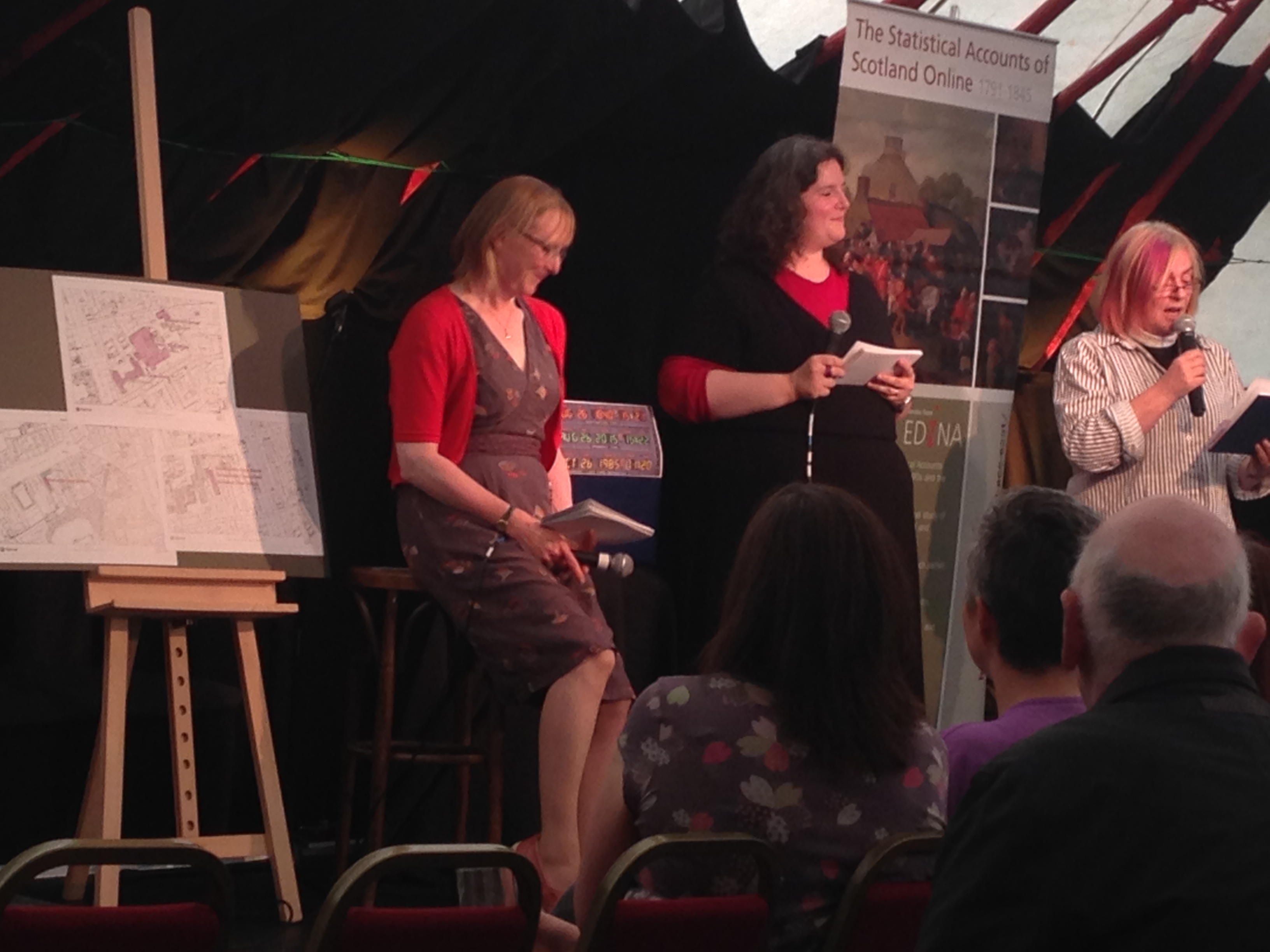The first blog about the Statistical Accounts of Scotland service described how in May 1790, Sir John Sinclair wrote to every Church of Scotland Minister in each of the 938 parishes in Scotland with a list of 160 questions plus an addendum of 6 further questions. Sir John intended to use the responses to his very thorough range of questions to elucidate the Natural History and Political State of Scotland or “the quantum of happiness” of its people.
Whilst researching the origins of the first Statistical Accounts for a performance at the Cabaret of Dangerous Ideas on the Edinburgh Fringe, myself and Nicola Osborne from EDINA discovered an additional five questions in the next very persuasive circular letter from Sir John Sinclair, which the Ministers received in January 1791, 8 months after the initial request.
SIR,
IT is with infinite pleasure I have the honour of acquainting you, that by the zeal and patriotism of the clergy of Scotland, I have already in my possession materials for drawing up a Statistical Account of a considerable part of the whole kingdom…
..But I am anxious that the Clergy of Scotland should not only do it well, but quickly; so that the state of the whole country should be known, if possible, at nearly the same period of time. I therefore hope, Sir, that, for the honour of our national church, you will make every exertion in your power to send me as full, and as accurate an account, as possible of your parish…
…In the queries formerly sent, some particulars were omitted, of which I should be glad to be informed, even from those gentlemen who have already favoured me with their answers: as,
1. What is the state of the schools in the parish; the salary and perquisites of the schoolmaster; and the number of his scholars?
2. What is the number of alehouses, inns, &c.; and what effect have they on the morals of the people?
3. What is the number of new houses or cottages which have been built within those ten years past; and how many old ones have been pulled down, or have become uninhabitable?
4. What has been the effect of employing cottagers in agriculture, or of working by hired servants in their stead? and,
5. What has been the number of prisoners in any jail in the district, in the course of the year 1790; and for what causes were they imprisoned?
Tables of births, marriages, and deaths, kept in any particular parish would be very desirable. Nor can the information respecting all points connected with the population of the country, be too accurate and minute.
We are not aware of what the “patriotic and zealous” Parish ministers thought when they received this request for yet more information, especially those who had already responded very promptly! It would be a further eight years before all of the twenty-one Volumes of the First Statistical Accounts of Scotland were published.
These questions, along with images and transcripts of the first 166 questions can be found within the Related Resources provided by the Statistical Accounts of Scotland service (note that related resources are only available to subscribing users of the service).
– Helen Aiton June 2015
Helen Aiton and Nicola Osborne present ‘Back to the Statistical Future‘ as part of The Cabaret of Dangerous Ideas at the Stand Comedy, Edinburgh.
How different is Scotland in 2015, to Scotland in 1835?
As good education is increasingly costly and inaccessible to the poor, are we seeing our modern ‘lords and gentlemen’ believing we will be ‘more obedient and dutiful, were [we] more ignorant, and had no education’?
Might our poor potentially be ‘corrupted, by being taught to read and write’? Might we be returning to a time when libraries are only sustained by subscriptions?
Join us for a whistle stop hover-board ride through the bizarre parallels between modern Scotland and the ‘New’ Statistical Accounts of Scotland (1834-1845).
@CODIfringe
We hope you have enjoyed this post: it is characteristic of the rich historical material available within the ‘Related Resources’ section of the Statistical Accounts of Scotland service. Featuring essays, maps, illustrations, correspondence, biographies of compliers, and information about Sir John Sinclair’s other works, the service provides extensive historical and bibliographical detail to supplement our full-text searchable collection of the ‘Old’ and ‘New’ Statistical Accounts.
![Christmas tree, from ‘Rutherfurd's Southern Counties Register... being a supplement to the almanacs; containing […] much useful information connected with the counties of Roxburgh, Berwick and Selkirk’ Published in Kelso, by J. and J.H. Rutherfurd, in 1858](https://libraryblogs.is.ed.ac.uk/statacc/files/2015/12/14782967772_b57b7932e8_n.jpg)

